Trampling the starry firmament in their filthy boots
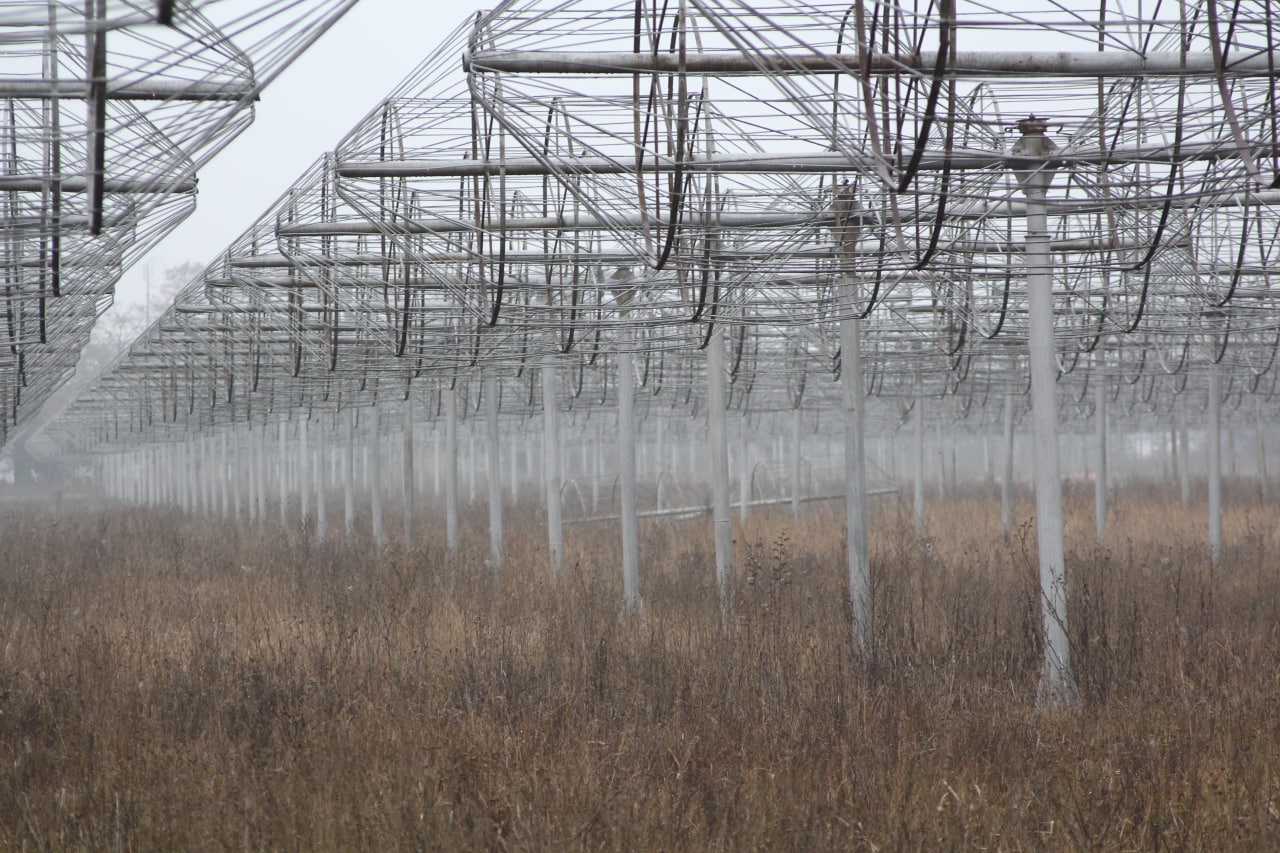
Radio storms on Jupiter, lightning on Saturn, the Sun, pulsars, the last flickers of supernovae, the interstellar and interplanetary environment, and extragalactic objects are just a few of subjects studied by Ukrainian scientists at the S.Ya. Braude Radioastronomical Observatory using its two telescopes. The first of these, the “Ukrainian T-shaped Radio-telescope (modification 2)” or UTR-2, is the world’s largest low-frequency radio telescope at decametre wavelengths: its T-shaped array of elements covers an area equivalent to 30 football pitches. The second is the contemporary Giant Ukrainian Radio Telescope or GURT.
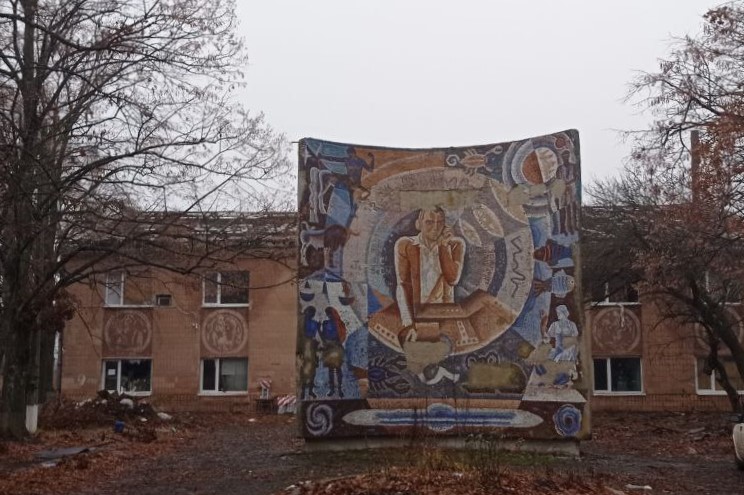
Once scientists and researchers from the National Institute of Radio Astronomy lived and worked at the Observatory. The observatory’s two-storey building, decorated with mosaic panels, was equipped with bedrooms, a shared kitchen and refectory, and hot showers for when they visited to take readings and measurements.
Russian forces captured the village of Hrakove on Friday 25 February 2022, the second day of the invasion; they entered the grounds of the Observatory on 2 April. Its staff had remained there until then, among them Academician Oleksandr Konovalenko, deputy director of the Academy of Sciences’ Institute of Radio Astronomy. He was guarding a sacred place, he says: Konovalenko has worked with the UTR-2 telescope since it was completed in the early 1970s.
Russian soldiers ejected the staff and turned this jewel of national and world science into a military base and store for munitions. They created artillery positions and scattered landmines and tripwire-mines in the surrounding territory. They pillaged and destroyed unique equipment.
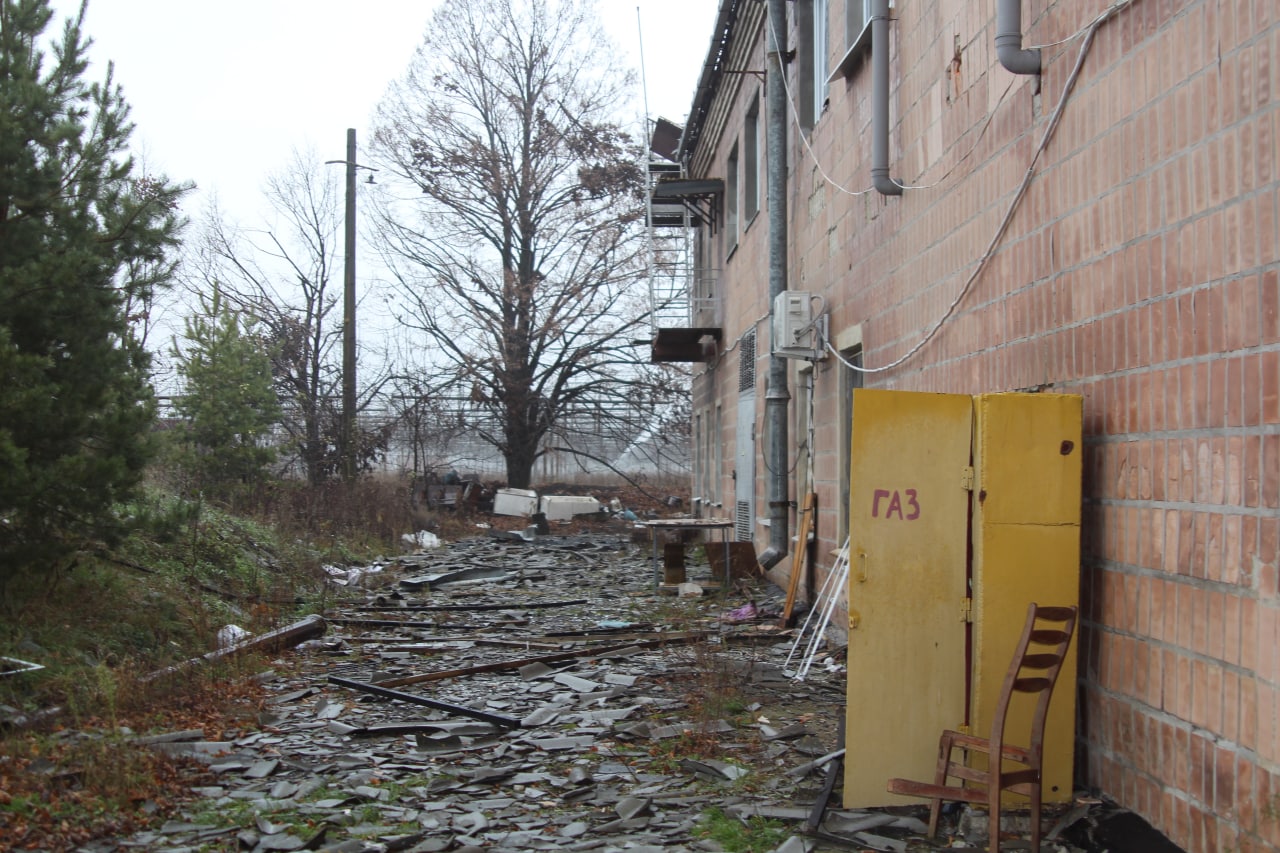
The Russian forces seem to have liked the enormous, far-flung territory of the Observatory with its underground tunnels, its own vehicles, a hangar, stores, living accommodation and garages. Very little of that remains today.
The central building can be recognised by the mosaics displaying the naïve faith of the 1970s in humanity’s genius in reaching for the stars, not for starting wars. Copernicus gazes sadly down on the empty shell-boxes and the wrappers from Russian dry rations that lie scattered everywhere. On the window below his portrait a paper notice warns of the presence of mines.
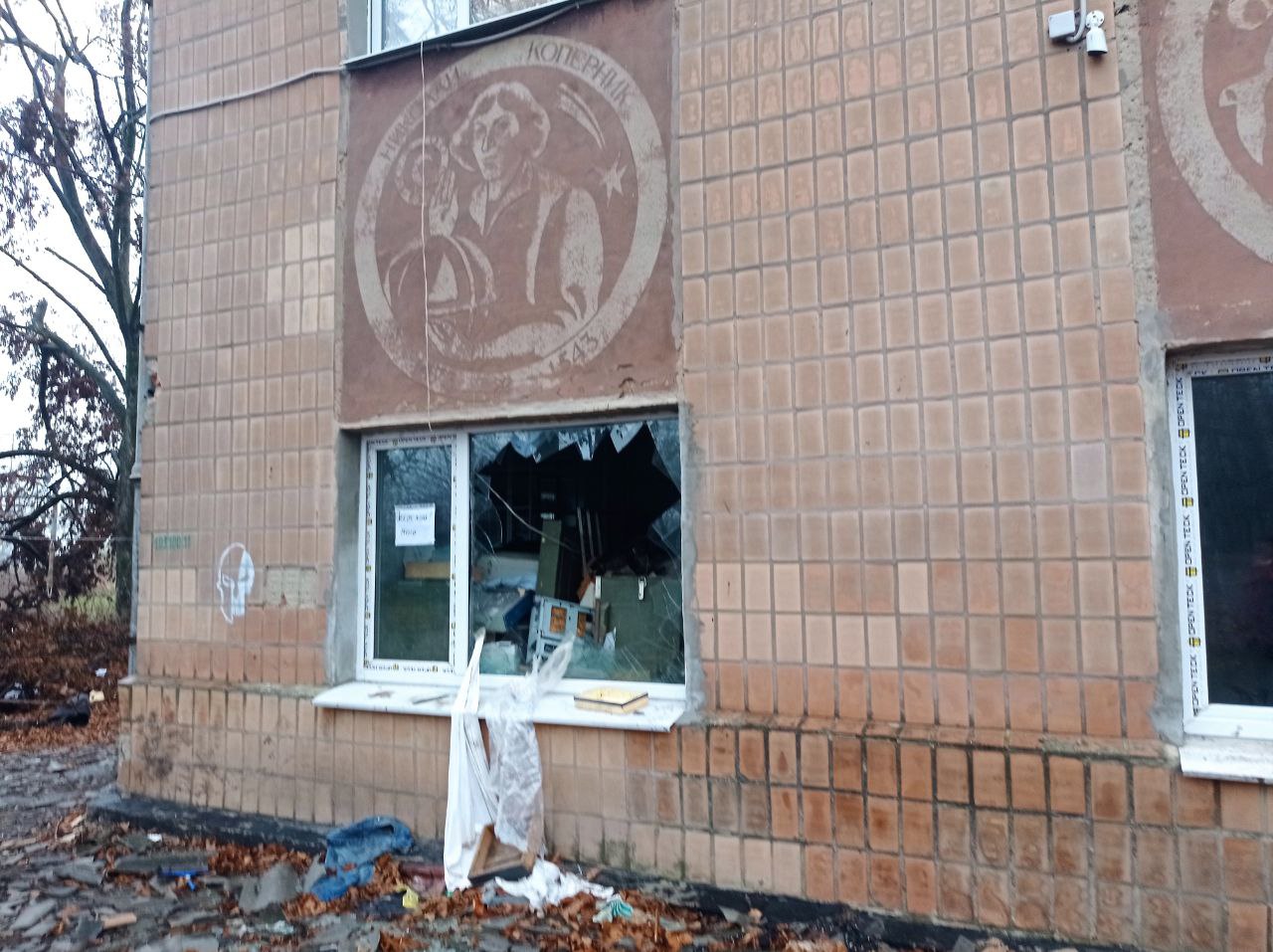
… We walked along a corridor filled with the garbage left by the Russians: broken bricks, the remains of ruined instruments. We proceed cautiously — in places the roofing has collapsed. Everywhere the walls are covered with the Z of the invaders. That, evidently, was the barbarous way Russian soldiers chose to settle into the incomprehensible and “hostile domain of science”.
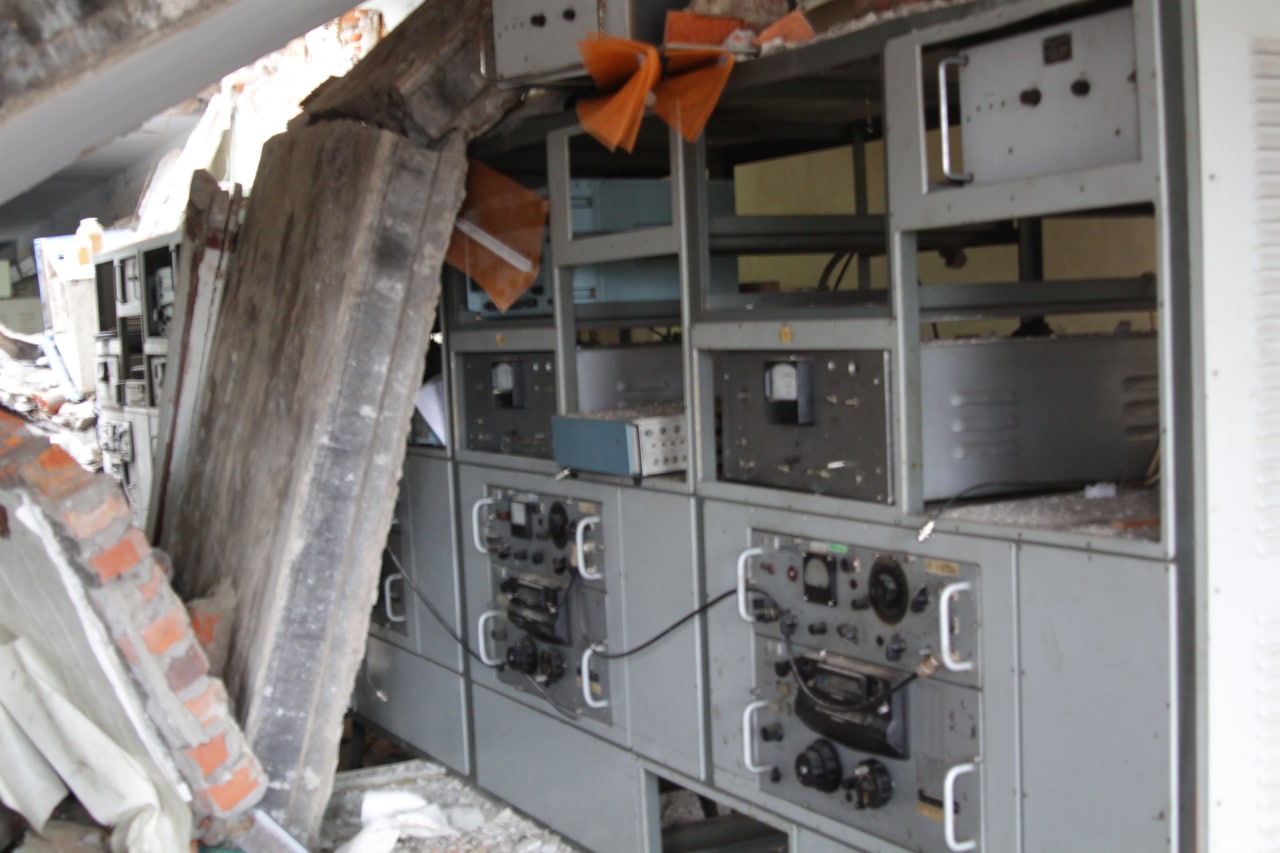
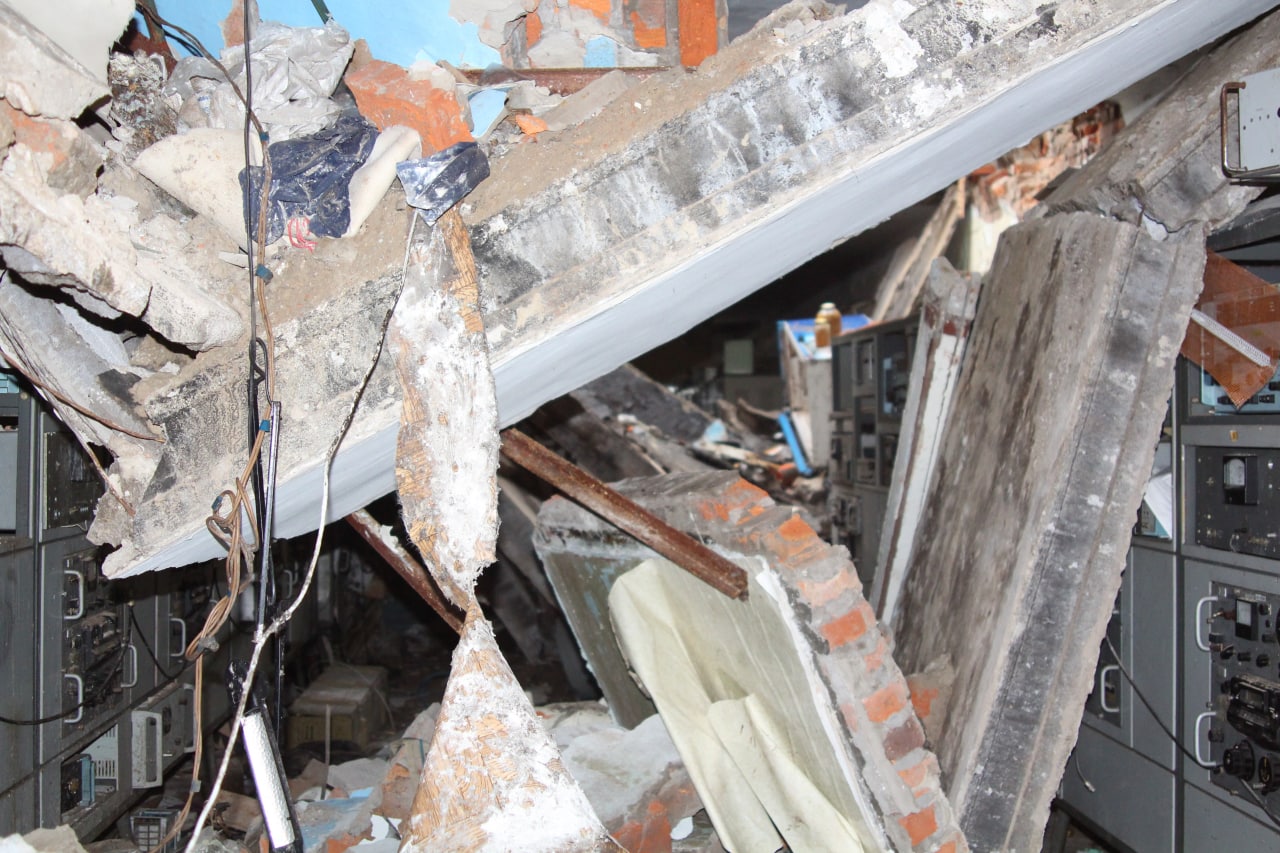
“In the central building”, said staff member Hanna Belenets, “they set up some kind of military hospital. They left behind a lot of medicaments and white surgical gowns on the first floor. Triangular frames were attached above the back of the beds so that the patients could get up more easily. We found surgical forceps but the bed linen showed no signs of blood … There were a great many sedatives among the medicines.”
Staff from the Institute were loading a van with anything from the central building that can be reused. It was not a rich harvest, mainly computer mice.
“They stole a great deal: vehicles, machine tools, transformers and tractors,” says Hanna. “Computers, naturally. And they tore apart much of the equipment: they didn’t understand what it was for. Computer mainframes lay all over the place — I don’t know what they were looking for!”
In front of the building were piles of earth: it seems the Russians were digging shelters here.
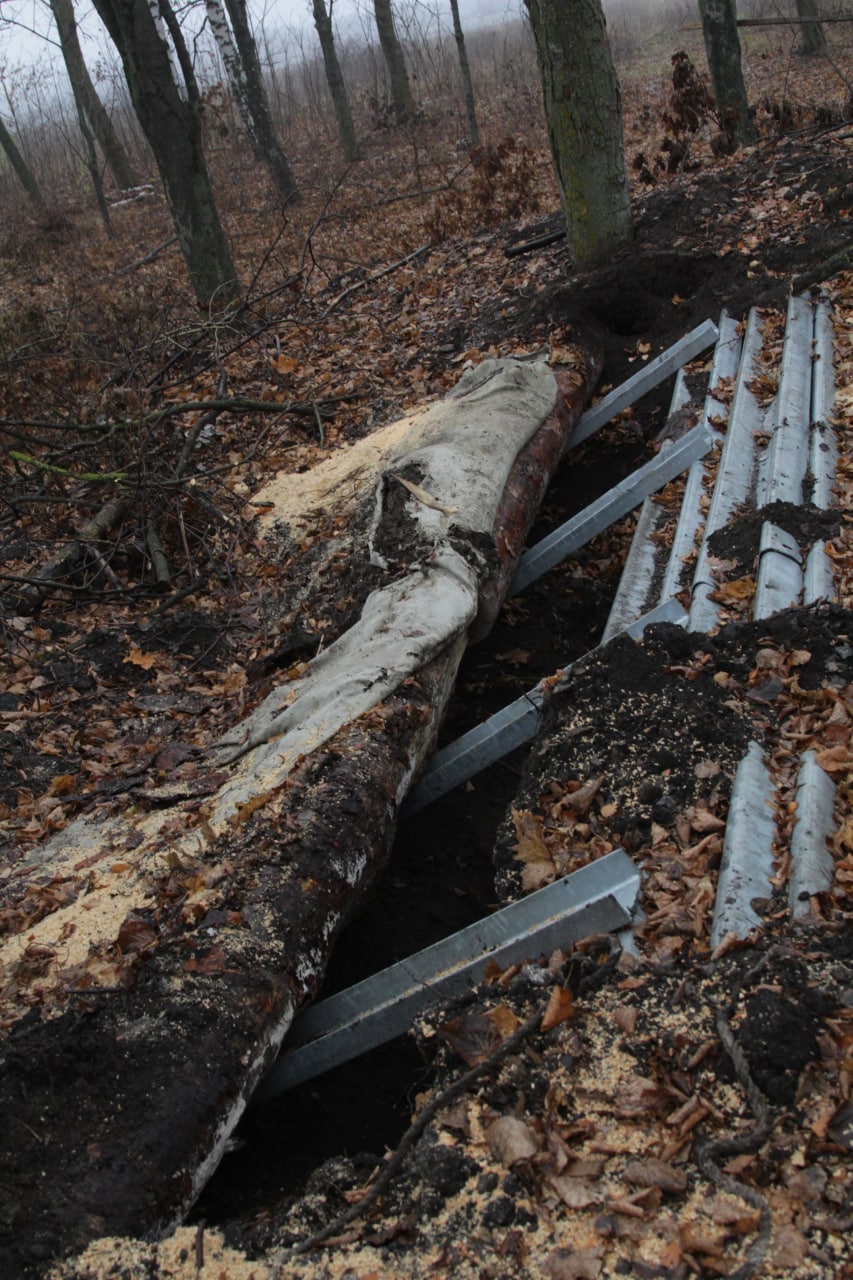
In the mist we could see figures moving among the arrays of antennae. Radio astronomers were checking whether the equipment had survived. They moved carefully since not all the mines had yet been deactivated. Here and there red flags could be seen, left by the sappers to mark mines and unexploded shells. They’d been lucky with the antennae, apparently: only one of the many hundred had been knocked down. Whether they would work was not clear. The cable network had still to be demined.

“In fact, the antennae did suffer,” senior research associate Ihor Bubnov told us. “They only appear undamaged at first sight. If you take a closer look the rods have been broken. A great many tripwire-mines were planted here; they were discovered back in September [2022]. Of course, we wish that all this area was cleared of mines as soon as possible. We can’t start work again until that happens. … People still come here and take a risk. We walk around in single file.”

Hardly anything is left of the observatory store buildings. The invaders kept their shells there and during the Ukrainian counter-offensive the Russian munitions store was blown sky high. Not everything was detonated then: there are some charred but unexploded remains and it’s dangerous to stir such shells. Perhaps they will have to deactivated here, where they lie.
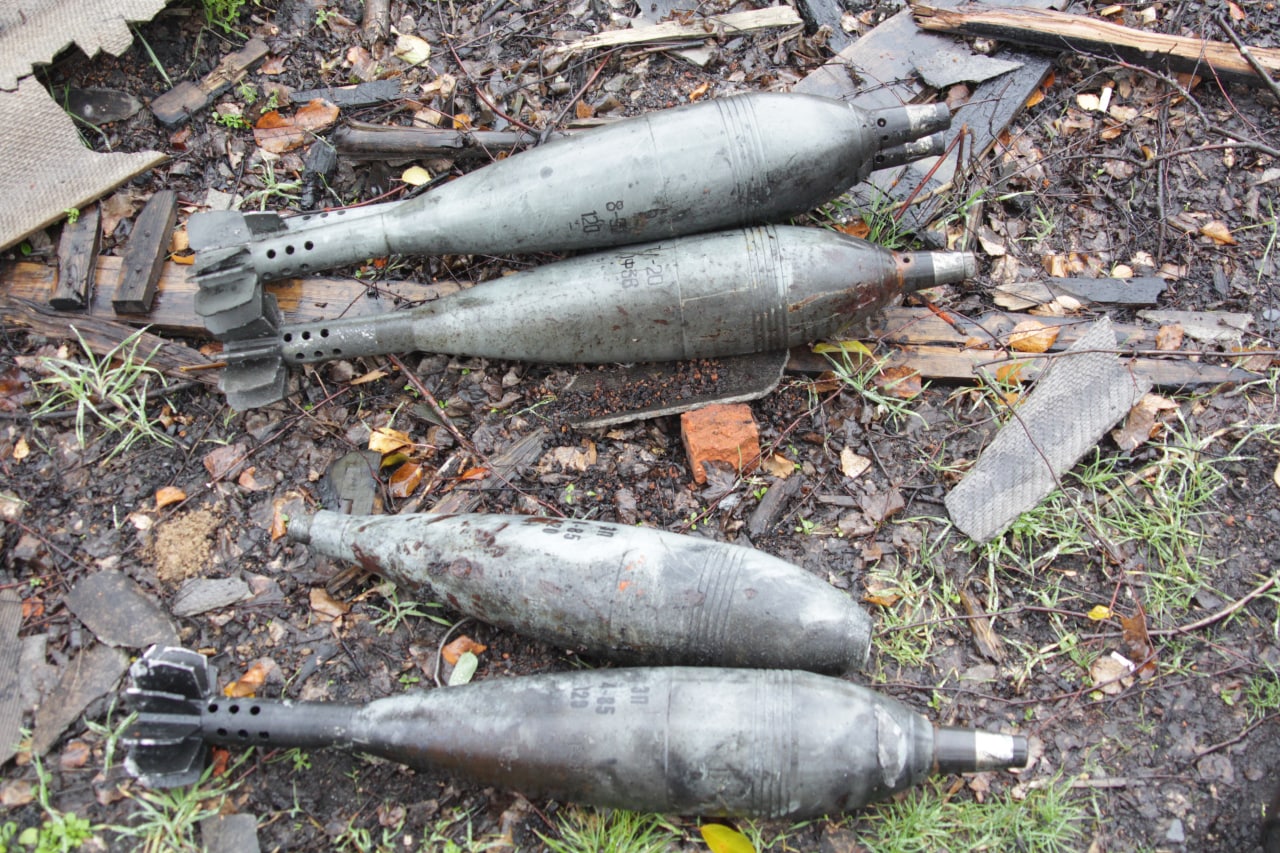
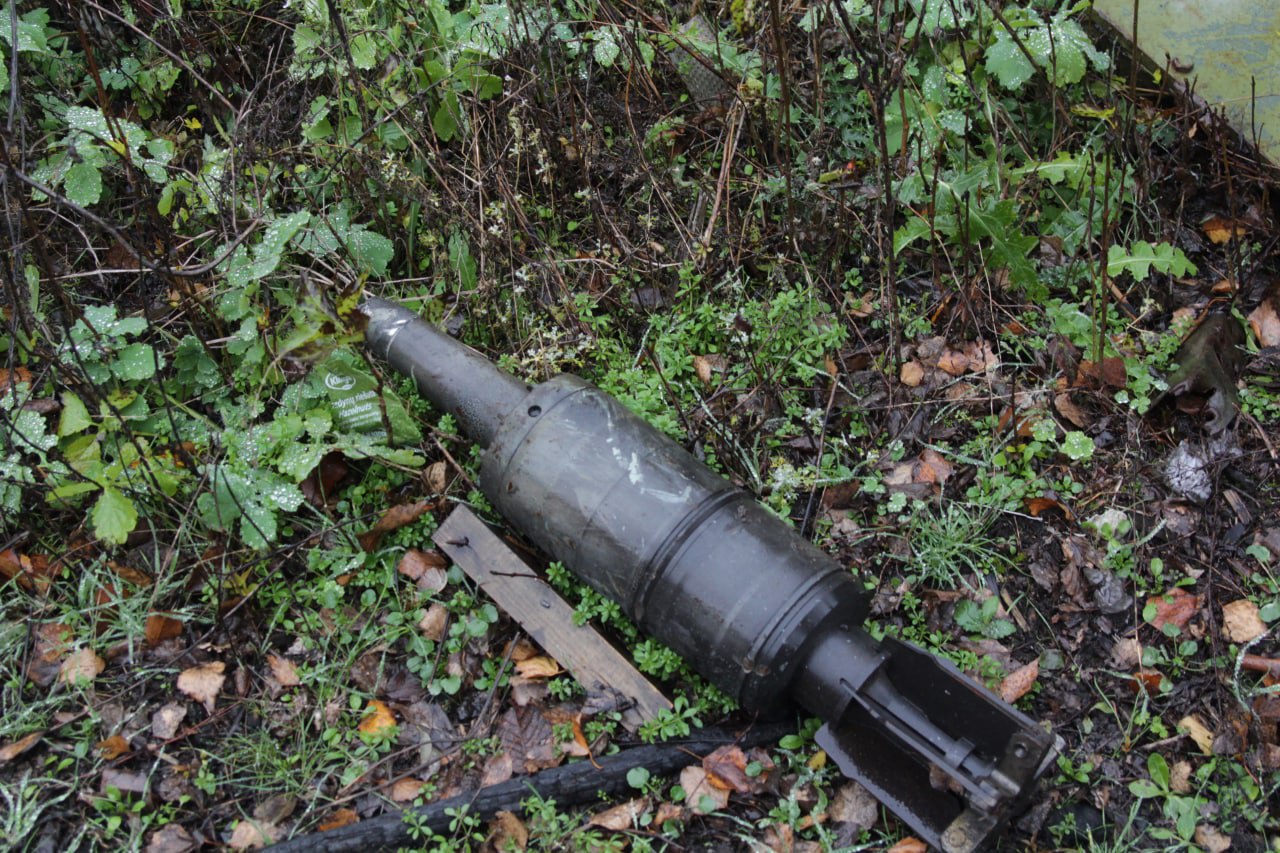
The Observatory’s enormous hangar is riddled with holes from shelling and from the inside today recalls a planetarium. Nearby lies a pile of smashed and burnt-out vehicles.

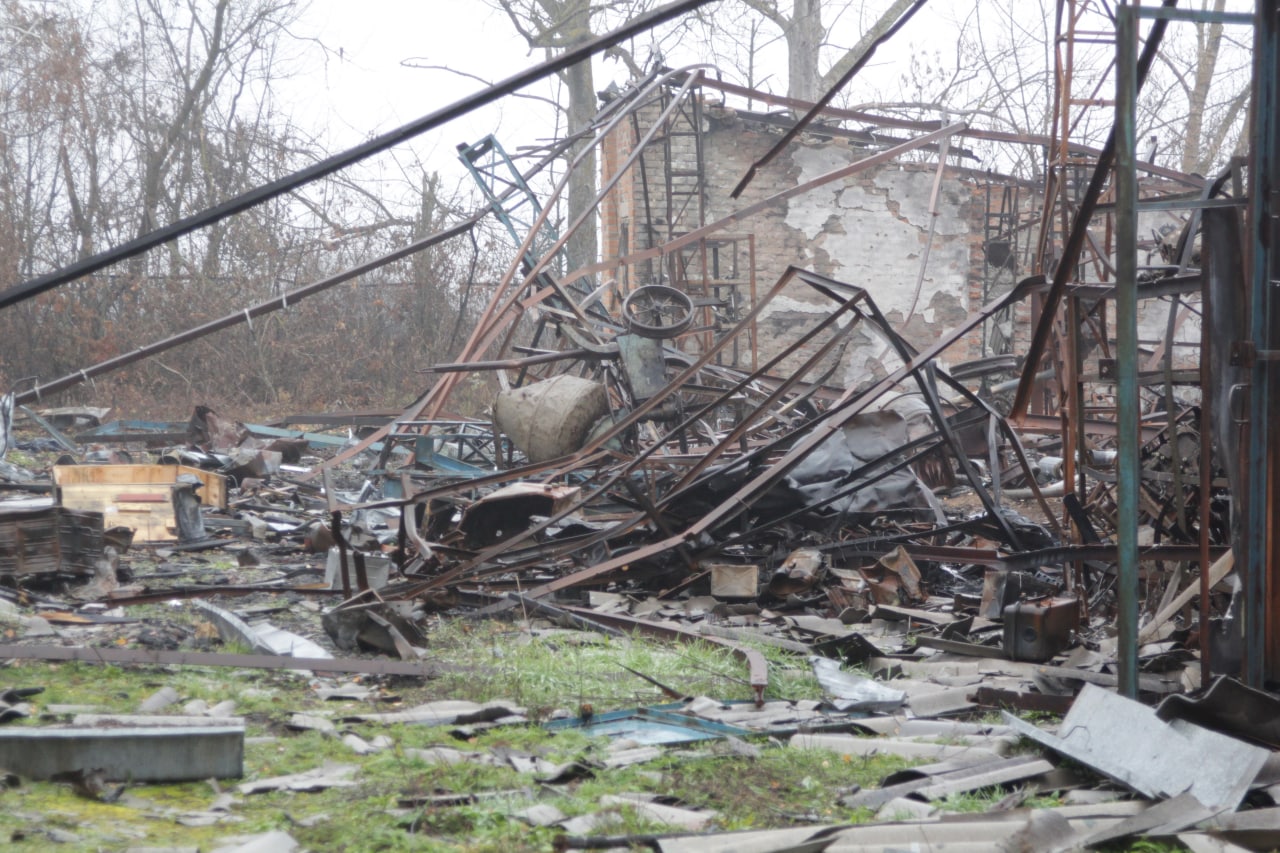
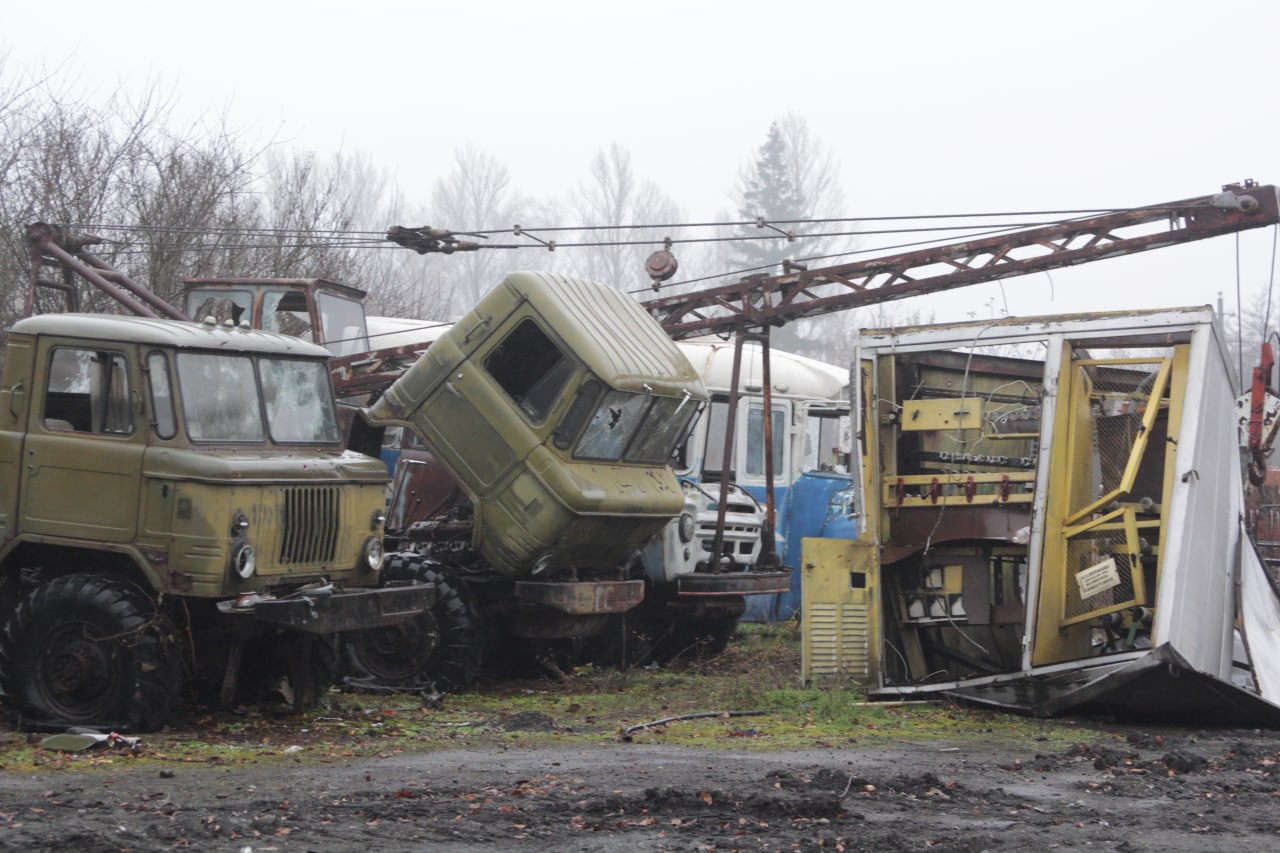
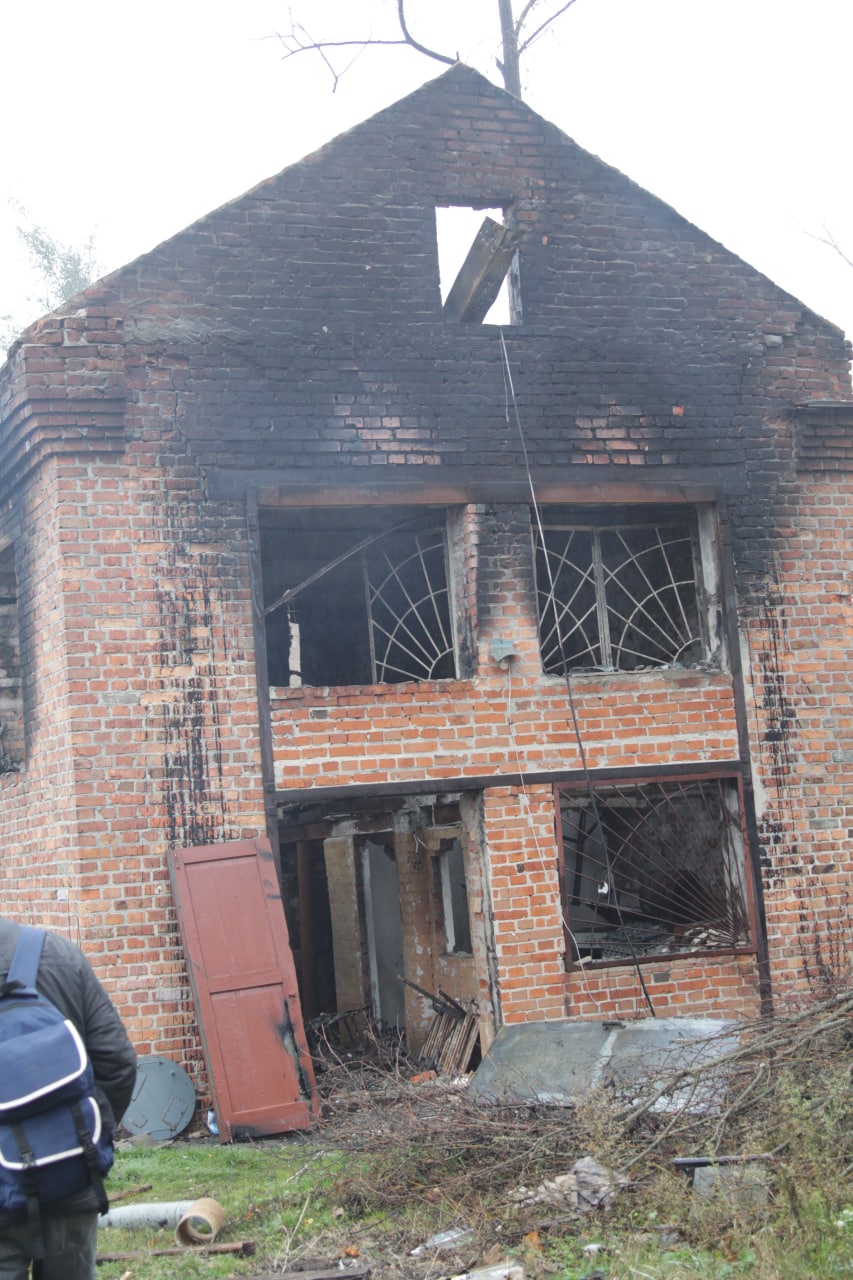
“The central building suffered the worst,” Bubnov told us. “It contained the main recording apparatus and the systems for management and phase adjustment. It’s all over and done with. The recording apparatus was new and advanced. The system for phase adjustment was inherited from the Soviet Union. It’s hard to buy even the hardware components here nowadays.”
Academician Konovalenko does not mince words when he talks about the invaders.
“Over 50 years we developed these radio-telescopes and they could all disappear because of those Russian bastards. They shelled Kharkiv from my observatory! Russia’s astronomers knew that their soldiers should not enter these premises but they did nothing to save the observatory! Not one of them said a word. Russia is a vile country that kills not only people but science. UTR-2 is an enormous loss to science. The telescope is recognised by the world scientific community and thanks to its existence we cooperate with ten other countries worldwide. It’s our distinction to pick up the lowest quality cosmic rays that can be observed from the surface of the earth. The world has already understood that this range is the most informative.
“Unfortunately, the central building has probably been ruined: everything was pillaged there. The most valuable parts of our radio-telescope are located underground, however. And they have survived, it would appear. Our pride and joy, the new-generation radio-telescope GURT covers three times as many frequencies and it has not yet been destroyed. Only one of the two digital receivers was stolen. Despite the war and destruction, the research and work of the Radioastronomical Institute has not come to a halt. Our scientists helped to construct yet another telescope of the same type in France. Admittedly, it’s smaller. Two of our research associates are currently working there. Four more radio telescopes are in operation in Ukraine and together they are almost the equivalent of the radio telescope near Hrakovo. Furthermore, we have accumulated a vast amount of know-how: data that we are still processing and intend to publish. However, we’ve lost our primacy in the world or, to be more precise, we could lose it if we cannot repair UTR-2.”
We left the grounds of the tormented observatory along a road forged by heavy military vehicles. Behind us in the mist we could see the outlines of buildings mangled by explosions. Until recently they were centres for investigating the future; Russian forces reduced them to the dark ages.
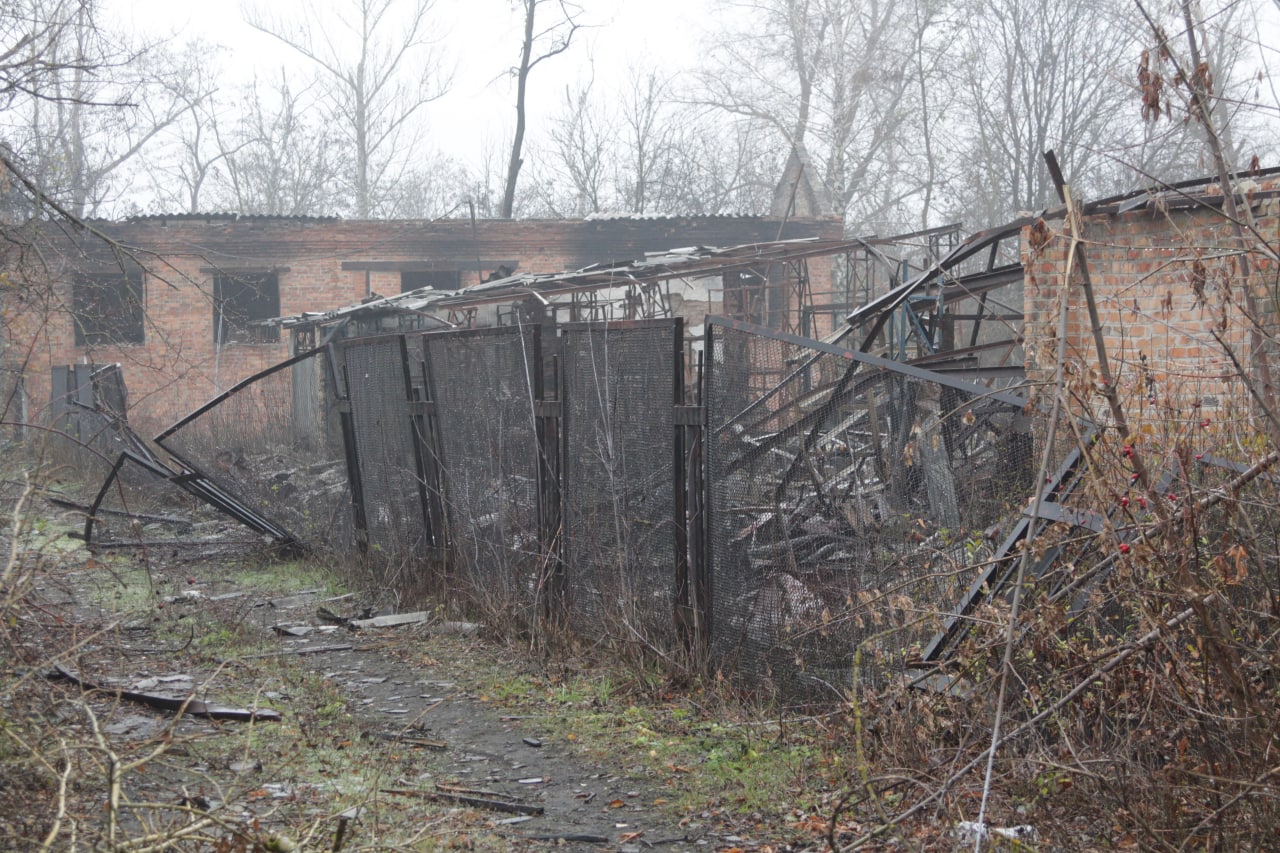
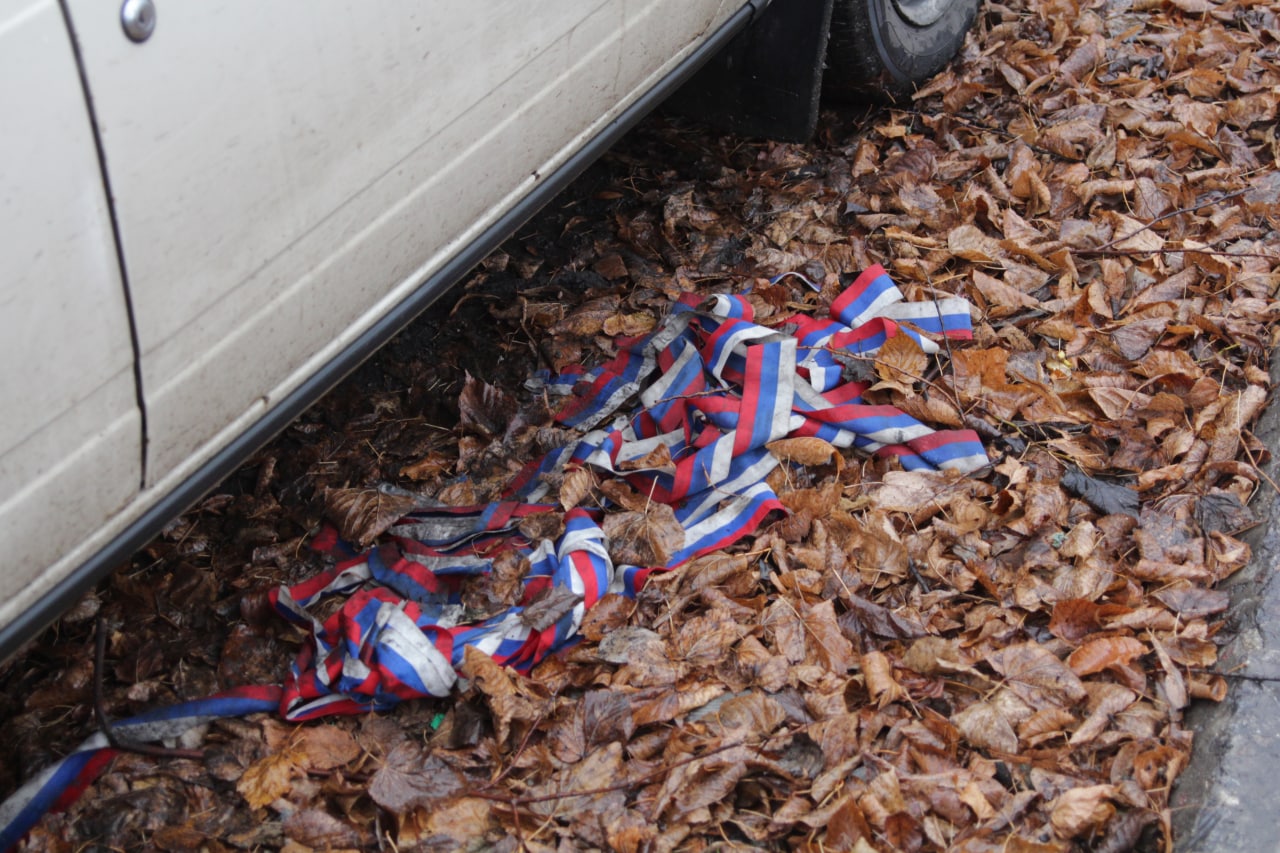
In spring this year there were still landmines scattered across the grounds of one of the world’s largest radio telescopes. The priority for Ukraine’s sappers is to make key infrastructure sites and agricultural land safe again. Despite the danger, however, the observatory is not empty. Every day some of the technical staff who live in surrounding villages come to protect, clean and repair the observatory and its equipment. Scientists and researchers regularly visit from Kharkiv.
“Our staff move around very cautiously. We know which paths have been cleared of mines,” Academician Konovalenko tells us, “We walk where the sappers have already been. The radio-telescope covers 140 hectares, an enormous area. It cannot be quickly cleared of mines and now the grass has grown, making it dangerous and difficult to work. Nothing can be seen. Mines have not yet been clear from many of the underground tunnels. Back in September our soldiers were only able to clear one tunnel. Now, unfortunately, no one is deactivating the mines. We were able to cover the roof and the windows using funds provided by the Academy of Sciences. The power is not back on yet. We have acquired several diesel generators and we intend to purchase solar power stations.”
There are plans to restore our modern GURT telescope in the near future. The servers on which a great deal of radio-astronomical data was stored were destroyed. Now we are going to store valuable information at repositories in the Netherlands. Scientists know that after the war has been won UTR-2 will also start working again. They are counting on help from international partners and the Ukrainian army.
“Scientific research continued despite the war and the destruction, and it will go on,” Konovalenko is sure.